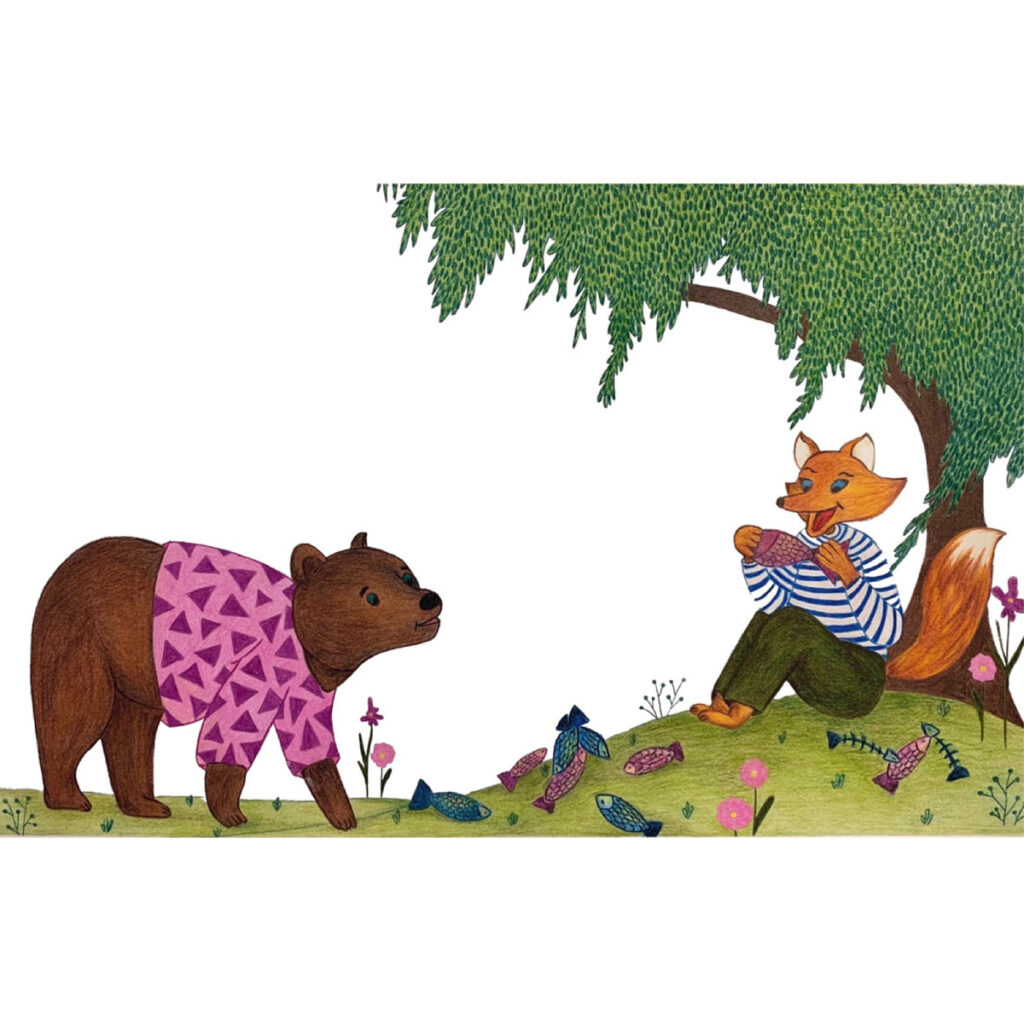
de Hans Christian Andersen
A fost odată un prinţ şi prinţul acela voia să se însoare cu o prinţesă, dar cu o prinţesă adevărată.
A mers în toată lumea ca să găsească una pe placul lui şi tot n-a găsit. Prinţese erau destule, dar el nu putea să ştie dacă erau cu adevărat prinţese, fiindcă tuturora le lipsea câte ceva. Şi prinţul s-a întors iar acasă şi era foarte necăjit, pentru că a vrut să găsească o prinţesă adevărată.
Într-o seară, tocmai se stârnise o furtună cumplită, tuna şi fulgera şi ploua cu găleata; era o vreme îngrozitoare. Deodată s-a auzit cum bate cineva la poarta oraşului şi regele, tatăl prinţului, s-a dus să deschidă.
La poartă era o prinţesă. Vai, dar în ce hal era din pricina ploii şi a vremii rele! Apa îi curgea şiroaie pe păr şi pe haine. Dar zicea că-i prinţesă adevărată.
– Bine, lasă că vedem noi! s-a gândit regina, dar n-a spus nimic; s-a dus în odaia de culcare, a luat toate saltelele din pat şi a pus pe scândurile patului o boabă de mazăre. Pe urmă a pus peste mazăre douăzeci de saltele şi peste saltele douăzeci de perne mari de puf.
Aici s-a culcat prinţesa. Dimineaţa au întrebat-o cum a dormit.
– Groaznic de prost! a răspuns prinţesa. Toată noaptea n-am închis ochii. Nu ştiu ce a fost în pat! Am şezut pe ceva tare şi acum am numai vânătăi! Groaznic!
Şi atunci au văzut cu toţii că era o prinţesă adevărată, dacă a simţit ea o boabă de mazăre prin douăzeci de saltele şi douăzeci de perne de puf. Aşa de gingaşă la piele nu putea să fie decât numai o prinţesă!
Şi prinţul a luat-o de nevastă, fiindcă acum era hotărât că ea e prinţesă adevărată; iar boaba de mazăre au pus-o în odaia unde erau bijuteriile coroanei şi se mai poate vedea acolo şi astăzi dacă n-o fi luat-o careva.
In English:
Once upon a time there was a prince and that prince wanted to marry a princess, but a real princess.
He went all over the world to find one he liked and still couldn’t find one. There were plenty of princesses, but he couldn’t tell if they were really princesses, because they all lacked something. And the prince returned home again and was very troubled, because he wanted to find a real princess.
One evening, a terrible storm had just arisen, thunder and lightning and heavy rain; it was a terrible weather. Suddenly someone was heard knocking at the city gate and the king, the prince’s father, went to open it.
At the gate was a princess. Alas, but what a state she was in because of the rain and the bad weather! The water was running down her hair and clothes. But she said she was a real princess.
– Okay, let’s see! thought the queen, but said nothing; she went to the bedroom, took all the mattresses from the bed and put a pea on the bed boards. Then she put twenty mattresses on top of the peas and twenty large down pillows on the mattresses.
This is where the princess slept. In the morning they asked her how she slept.
– Terribly awful! answered the princess. I didn’t close my eyes all night. I don’t know what was in bed! I sat on something hard and now I only have bruises! Terrible!
And then they all saw that she was a real princess, if she felt a pea through twenty mattresses and twenty down pillows. Only a princess could have such a soft skin!
And the prince married, because now he was believed that she was a true princess; and they put the pea in the room where the crown jewels were and it can still be seen there today if someone had not taken it.






